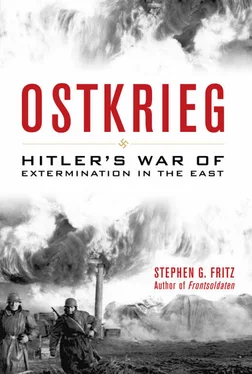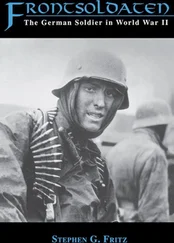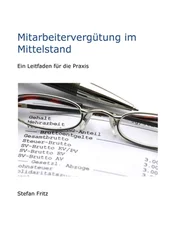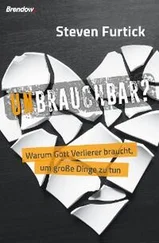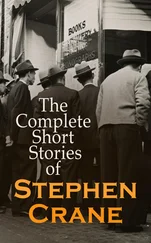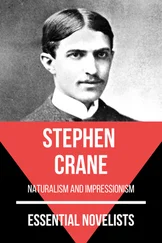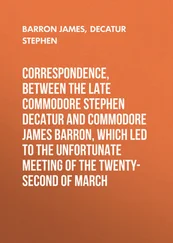Kroener, Bernhard R., Rolf-Dieter Müller, and Hans Umbreit, eds. Organization and Mobilization of the German Sphere of Power: Wartime Administration, Economy, and Manpower Resources, 1942–1944/5 . Translated by Derry Cook-Radmore, Ewald Osers, and Barry Smerin. Vol. 5/2 of Germany and the Second World War . Oxford: Clarendon, 2003.
———, eds. Organization and Mobilization of the German Sphere of Power: Wartime Administration, Economy, and Manpower Resources, 1939–1941 . Translated by John Brownjohn. Vol. 5/1 of Germany and the Second World War . New York: Clarendon, 2000.
———, eds. Organisation und Mobilisierung des deutschen Machtbereichs: Kriegsverwaltung, Wirtschaft und Personelle Ressourcen, 1942–1944/45 . Vol. 5/2 of Das deutsche Reich und der Zweite Weltkrieg . Stuttgart: Deutsche Verlags-Anstalt, 1999.
———, eds. Organisation und Mobilisierung des deutschen Machtbereichs: Kriegsverwaltung, Wirtschaft und Personelle Ressourcen 1939–1941 . Vol. 5/1 of Das deutsche Reich und der Zweite Weltkrieg . Stuttgart: Deutsche Verlags-Anstalt, 1988.
———. “Auf dem Weg zu einer ‘nationalsozialistischen Volksarmee’: Die soziale Öffnung des Heeresoffizierkorps im Zweiten Weltkrieg.” In Von Stalingrad zur Währungsreform: Zur Sozialgeschichte des Umbruchs in Deutschland , ed. Martin Broszat, Klaus-Dietmar Henke, and Hans Woller, 651–82. Munich: Oldenbourg, 1988.
Kuby, Erich. Mein Krieg: Aufzeichnungen aus 2129 Tagen . Munich: Nymphenburger, 1975.
Kühl, Stefan. The Nazi Connection: Eugenics, American Racism, and German National Socialism . New York: Oxford University Press, 1994.
Kühne, Thomas. “Gruppenkohäsion und Kameradschaftsmythos in der Wehrmacht.” In Die Wehrmacht: Mythos und Realität , ed. Rolf-Dieter Müller and Hans-Erich Volkmann, 534–49. Munich: Oldenbourg, 1999.
Kunz, Andreas. “Die Wehrmacht, 1944/45: Eine Armee in Untergang.” In Der Zusammenbruch des deutschen Reiches, 1945: Die Folgen des Zweiten Weltkrieges (vol. 10/2 of Das deutsche Reich und der Zweite Weltkrieg ), ed. Rolf-Dieter Müller and Jörg Echternkamp, 3–54. Munich: Deutsche Verlags-Anstalt, 2008.
———. Wehrmacht und Niederlage: Die Bewaffnete Macht in der Endphase der nationalsozialistischen Herrschaft, 1944 bis 1945 . Munich: Oldenbourg, 2005.
———. “Die ‘Aktion Leuthen’: Das Ende des deutschen Ersatzheeres im Frühjahr 1945.” Zeitschrift für Geschichtswissenschaft 48, no. 9 (2000): 789–806.
Kunz, Norbert. “Das Beispiel Charkow: Eine Stadtbevölkerung als Opfer der deutschen Hungerstrategie, 1941/42.” In Verbrechen der Wehrmacht: Bilanz einer Debatte , ed. Christian Hartmann, Johannes Hürter, and Ulrike Jureit, 136–44. Munich: Beck, 2005.
Kwiet, Konrad. “Erziehung zum Mord—Zwei Beispiele zur Kontinuität der deutschen ‘Endlösung der Judenfrage.’” In Geschichte und Emanzipation: Festschrift für Reinhard Rürup , ed. Michael Grüttner, 435–57. Frankfurt: Campus, 1999.
———. “Rehearsing for Murder: The Beginning of the Final Solution in Lithuania in June 1941.” Holocaust and Genocide Studies 12, no. 1 (1998): 3–26.
———. “From the Diary of a Killing Unit.” In Why Germany? ed. John Milfull, 75–90. Oxford: Berg, 1992.
———. “Forced Labour of German Jews in Nazi Germany.” Leo Baeck Institute Year Book 36 (1991): 389–410.
Lakowski, Richard. “Der Zusammenbruch der deutschen Verteidigung zwischen Ostsee und Karpaten.” In Der Zusammenbruch des deutschen Reiches, 1945: Die militärische Niederwerfung der Wehrmacht (vol. 10/1 of Das deutsche Reich und der Zweite Weltkrieg ), ed. Rolf-Dieter Müller et al., 491–679. Munich: Deutsche Verlags-Anstalt, 2008.
Laqueur, Walter, and Richard Breitman. Breaking the Silence . New York: Simon & Schuster, 1986.
Latzel, Klaus. “Wehrmachtssoldaten zwischen ‘Normalität’ und NS-Ideologie, Oder: Was Sucht die Forschung in der Feldpost?” In Die Wehrmacht: Mythos und Realität , ed. Rolf-Dieter Müller and Hans-Erich Volkmann, 573–88. Munich: Oldenbourg, 1999.
———. Deutsche Soldaten—nationalsozialistischer Krieg? Kriegserlebnis, Kriegserfahrung, 1939–1945 . Paderborn: Schöningh, 1998.
Le Tissier, Tony. Zhukov at the Oder: The Decisive Battle for Berlin . Westport, CT: Praeger, 1996.
Leach, Barry A. German Strategy against Russia . Oxford: Clarendon, 1973.
Lehndorff, Hans Graf von. Ostpreußisches Tagebuch: Aufzeichnungen eines Arztes aus den Jahren 1945–1947 . Munich: Deutscher Taschenbuch, 1967.
Levine, Alan J. “Was World War II a Near-Run Thing?” Journal of Strategic Studies 8, no. 1 (1985): 38–63.
Lieb, Peter. “Täter aus Überzeugung? Oberst Carl von Andrian und die Judenmorde der 707. Infanteriedivision 1941/42.” Vierteljahrshefte für Zeitgeschichte 50, no. 4 (2002): 523–57.
Liedtke, Gregory. “Furor Teutonicus: German Offensives and Counter-Attacks on the Eastern Front, August 1943 to March 1945.” Journal of Slavic Military Studies 21, no. 3 (2008): 563–87.
Lindqvist, Sven. “Exterminate All the Brutes.” New York: New Press, 1996.
Liulevicius, Vejas Gabriel. War Land on the Eastern Front: Culture, National Identity, and German Occupation in World War I . New York: Cambridge University Press, 2000.
Lochner, Louis P., ed. The Goebbels Diaries, 1942–1943 . Translated by Louis P. Lochner. Garden City, NY: Doubleday, 1948.
Longerich, Peter. “Davon haben wir nichts gewusst!” Die Deutschen und die Judenverfolgung, 1933–1945 . Munich: Siedler, 2006.
———. The Unwritten Order: Hitler’s Role in the Final Solution . Stroud: Tempus, 2003.
———. “Working towards the Führer.” Yad Vashem Studies 30 (2002): 405–26.
———. Politik der Vernichtung: Eine Gesamtdarstellung der nationalsozialistischen Judenverfolgung . Munich: Piper, 1998.
———. “From Mass Murder to the ‘Final Solution’: The Shooting of Jewish Civilians during the First Months of the Eastern Campaign within the Context of Nazi Jewish Genocide.” In From Peace to War: Germany, Soviet Russia, and the World, 1939–1941 , ed. Bernd Wegner, 253–91. Providence, RI: Berghahn, 1997.
———. “Dokumentation: Joseph Goebbels und der Totale Krieg: Eine Unbekannte Denkschrift des Propagandaministers vom 18. Juli 1944.” Vierteljahrshefte für Zeitgeschichte 35, no. 2 (1987): 289–314.
Lower, Wendy. “ ‘Anticipatory Obedience’ and the Nazi Implementation of the Holocaust in the Ukraine: A Case Study of Central and Peripheral Forces in the Generalbezirk Zhytomyr, 1941–1944.” Holocaust and Genocide Studies 16, no. 1 (2002): 1–22.
Lozowick, Yaakov. “Rollbahn Mord: The Early Activities of Einsatzgruppe C.” Holocaust and Genocide Studies 2, no. 2 (1987): 221–42.
Lubbeck, William. At Leningrad’s Gates: The Story of a Soldier with Army Group North . Edited by David B. Hurt. Philadelphia: Casemate, 2006.
Lübbers, Gert C. “Die 6. Armee und die Zivilbevölkerung von Stalingrad.” Vierteljahrshefte für Zeitgeschichte 54, no. 1 (2006): 87–123.
———. “ ‘Ausnutzung oder Ausschlachtung?’ Zur Genese der deutschen Wirtschaftsplanungen für das Unternehmen ‘Barbarossa.’” In Krieg und Verbrechen: Situation und Intention: Fallbeispiele , ed. Timm C. Richter, 173–83. Munich: Meidenbauer, 2006.
Lucas, James, ed. War on the Eastern Front: The German Soldier in Russia . New York: Bonanza, 1979.
Читать дальше
